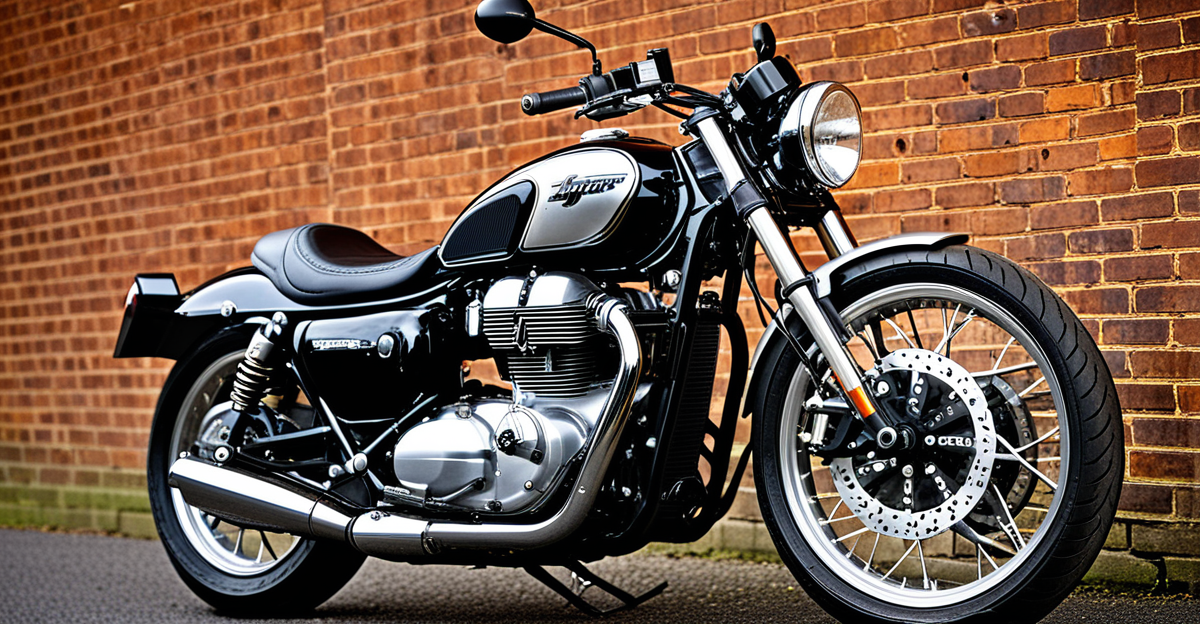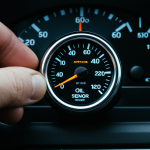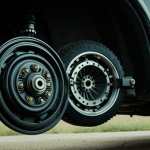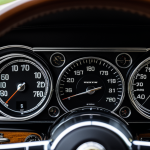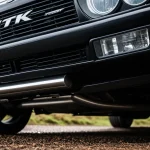Overview of Custom-Built Motorcycle Registration
Registering a custom-built motorcycle in the UK is not only a legal requirement but also crucial for the safety and compliance of your vehicle. Understanding the UK motorcycle laws and the registration process ensures that your custom creation adheres to the necessary regulations and standards.
Custom-built motorcycles must go through a specific registration process tailored to their unique nature. This process is governed by a legal framework that prioritizes safety and compliance, ensuring that every motorcycle on the road meets a set standard of operational safety and environmental impact. The registration ensures that the motorcycle is accounted for within the national database, which helps in case of accidents or theft.
Also to discover : Ultimate Parent’s Handbook: Navigating the Latest UK Car Seat Regulations for Infant Road Safety
One of the key benefits of proper registration is the enhanced legal protection for the owner. Registered motorcycles are recognized officially, providing a legal foundation for ownership rights and insurance claims. Additionally, the registration process ensures that all safety standards have been met, offering peace of mind to both the rider and other road users. This procedure also encourages builders to adhere to environmental standards, reducing emissions and promoting sustainability.
Understanding and following these legal requirements not only safeguards riders and their machines but also contributes to the overarching road safety and environmental goals of the UK. Engaging with this process, while initially demanding, ultimately reinforces the safe integration of unique motorcycle creations into the broader transportation ecosystem.
Additional reading : Ultimate UK Road Trip Prep Guide: Expert Tips to Ready Your Car for an Unforgettable Adventure
Necessary Documents for Registration
Registering a custom-built motorcycle in the UK requires a comprehensive understanding of the required documents needed to ensure a seamless process. These motorcycle registration papers serve as essential legal documentation, verifying both the motorcycle’s compliance with UK regulations and ownership details.
A crucial document is the proof of vehicle construction. This certification details the manufacturing process and the parts used, establishing the motorcycle as a distinct build requiring individual assessment. A current insurance certificate is also mandatory, confirming that the vehicle is covered for liability, which is a legal requirement before hitting the road.
You’ll also need the Customs’ clearance form, if any components were imported. This form ensures all imported parts meet the necessary regulations. Additionally, having a valid MOT certificate is crucial for those who have already assembled their motorcycles. This document certifies that the vehicle meets road safety and environmental standards.
Lastly, be prepared with proof of address and identity. These help verify the owner’s legal standing and ensure correspondence reaches the correct individual. Organizing these documents efficiently and ensuring that they are up-to-date can streamline the registration process significantly. Adopting a systematic approach will minimize hassles and facilitate a quicker transition from a custom build to a legally recognized motorcycle.
Legal Requirements for Custom-Built Motorcycles
Navigating the UK Legal Requirements for custom-built motorcycles is essential to ensure compliance and safety on the roads. Understanding these regulations protects not only the creator but also other road users.
Compliance Standards are tailored specifically for custom-built motorcycles, distinguishing them from mass-produced models. Builders must ensure that their motorcycles meet specific safety and environmental standards set forth by UK laws. This includes adhering to the Motorcycle Safety Regulations, which cover various aspects such as braking systems, lighting, and emissions. Fulfilling these standards is fundamental for both the approval of the registration and the legal operation of the motorcycle.
Safety regulations demand that custom motorcycles are equipped with appropriate safety gear and technology to minimize risk. This includes effective brakes, functioning lights, and meeting noise level restrictions. Compliance with these measures helps explain why the process is so rigorous—it’s a commitment to public safety and environmental responsibility.
The Consequences of Non-Compliance can be severe, resulting in penalties, fines, or even bans from road use. The motorcycle may also be required to undergo additional inspections or modifications to meet the stipulated standards. By understanding and adhering to the legal requirements, builders prevent potential legal issues, ensuring their hard work is legally recognized and safely operational on UK roads.
Step-by-Step Registration Process
Registering a custom-built motorcycle in the UK involves a structured procedure to ensure compliance with the national regulations and guarantee the safety of both the motorcycle and its rider. The registration process is methodical, beginning with essential initial preparations.
Initial Preparation
Before delving into the formalities of registration, one must prepare their motorcycle meticulously. This includes ensuring that all safety components, such as brakes, lights, and emissions systems, comply with UK safety regulations. It is critical to check that the motorcycle meets all operational and environmental standards, as inspectors from the DVLA will scrutinize these aspects during their evaluations.
Submission to DVLA
Once the motorcycle is prepped, the next step involves submitting applications to the DVLA (Driver and Vehicle Licensing Agency). This process requires all the necessary documents, which include filled registration forms, evidence of compliance with safety standards, and any additional paperwork as dictated by the motorcycle’s unique construction. The submission can be done online or through postal services, though processing times may vary.
Receiving Registration Certificate
After the DVLA process the application, they issue a registration certificate. This document is vital, as it officially acknowledges the motorcycle’s entry into the national database, safeguarding legal opportunities such as road use and insurance coverage. It is essential to review the certificate for accuracy to ensure that all details about the motorcycle are correctly reflected. Typically, this process can range from several weeks to a few months, depending on the workload and thoroughness of the initial application.
Potential Fees and Costs Involved
Understanding the registration fees and associated costs for custom-built motorcycles in the UK is crucial for effective financial planning. Being informed about these expenses ensures a smoother registration process and prevents unexpected financial burdens.
Registering a custom-built motorcycle entails several costs:
- DVLA Registration Fee: This is the primary cost, covering the administration of your motorcycle’s entry into the national database. It’s essential to factor in both the standard and any potential additional fees for unique cases.
- Vehicle Excise Duty (VED): Also known as road tax, this duty is based on the motorcycle’s emissions and engine size. Be aware that higher emissions may lead to increased costs, reflecting the UK’s environmental policies.
- Insurance Costs: While not directly tied to registration, obtaining a comprehensive insurance package is a mandatory legal step before hitting the road. Premiums can vary based on the motorcycle’s specifications and the rider’s profile.
Additional expenses might include inspections or modifications to meet compliance standards. Careful budgeting and allocation for these costs ensure that your custom motorcycle doesn’t face legal hurdles down the road. Adopting a detailed financial strategy helps in navigating these financial considerations effectively.
Tips to Ensure Compliance
Ensuring compliance when registering a custom-built motorcycle in the UK involves a meticulous approach that prioritizes both legal adherence and practical preparation. To facilitate this process, builders must first familiarize themselves with the specific UK motorcycle laws relevant to custom builds. This includes understanding how to meet the established compliance standards and how they differ from those applied to mass-produced motorcycles.
Avoiding common compliance pitfalls can save both time and resources. One frequent oversight is failing to provide complete and accurate motorcycle registration papers. To counter this, develop a checklist to organize and verify all required documents before submission. Additionally, paying close attention to motorcycle safety regulations ensures the vehicle meets the necessary safety requirements. This encompasses everything from the functionality of braking systems to adherence to noise level limitations.
Adopting best practices from experienced custom motorcycle builders can be invaluable. This might include consulting industry forums or seeking mentorship to gain insights into the registration process. Moreover, meticulous record-keeping, including maintaining updated logs on modifications or parts used, can significantly streamline compliance verification during inspections.
By incorporating these strategies, builders stand a better chance of achieving a seamless and error-free registration, effectively integrating their custom motorcycles into the UK’s legal and road safety framework.
Visual Aids and Resources
To simplify the Custom-Built Motorcycle Registration process in the UK, leveraging various visual aids can be incredibly beneficial. By making complex information more digestible, these tools ensure a smoother registration experience.
Importance of Visual Aids
Visual aids such as flowcharts and diagrammatic guides clarify each step of the Registration Process. They illustrate the sequence of tasks, highlighting crucial stages like preparing documents and meeting UK Motorcycle Laws. These aids reduce confusion, especially for first-time builders, enhancing comprehension and efficiency.
Examples of Checklists and Flowcharts
Checklists are indispensable for organizing the Required Documents needed for registration. A detailed list helps keep track of essential paperwork, such as insurance and proof of construction, ensuring nothing is overlooked. Flowcharts offer a visual roadmap for navigating the Legal Requirements and can illustrate decision points and necessary actions in the Motorcycle Registration Procedure. These tools empower builders by providing a clear and concise overview of the journey.
Recommendations for Online Resources
For further assistance, numerous online communities and forums provide valuable insights from veteran custom builders. These platforms can furnish additional Registration Resources, including templates and sample documents. Engaging with these communities not only provides support but also fosters an exchange of ideas for problem-solving and innovation in meeting Compliance Standards.

